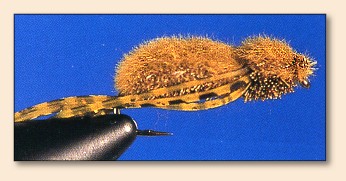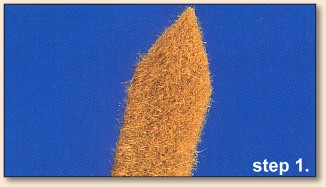
1. Trim a strip of Furry Foam about 3/8 of
an inch wide. Cut one end of the Furry Foam
strip to a point like a picket.
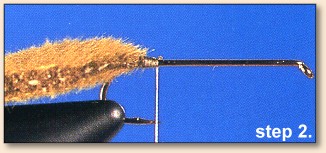
2. Attach the tying thread at the rear of
the hook. Leaving the majority of the hook
shank bare aids the spinning of the deer-hair
underbody. Tie the foam strip in at the rear
of the hook by the point.
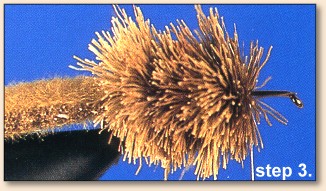
3. Spin a deer-hair body 3/4 of the hook shank.
Pack the hair tightly to create a dense body.
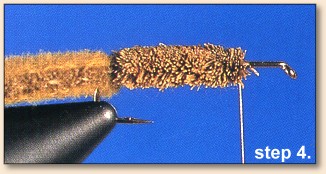
4. Trim the body flat on both top and bottom. Give
a gentle rounded appearance to the sides of the body.
The body dimensions come from the tension on the
Furry Foam strip rather than the spun and clipped
deer hair.
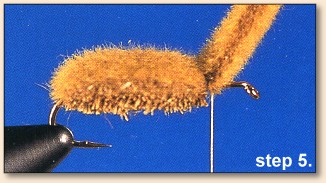
5. Pull the Furry Foam strip over the deer-hair
body. Adjust the tension so the width of the
strip is consistent with the spider-like look
of the natural nymph.
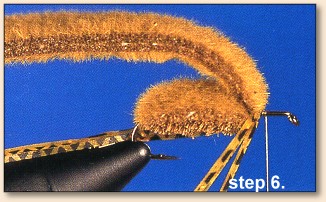
6. Take 3 lengths of silicone rubber leg material
and figure-eight them in place in front of the body.
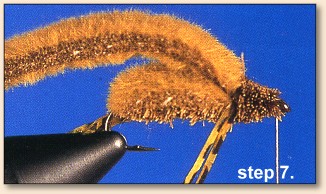
7. Spin and clip two stacks of deer hair to
form the head. Trim the head to a rough triangular
shape so the fly has a gathered appearance at the
junction of the body and head.
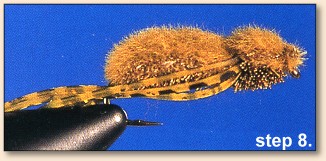
8. Pull the remaining foam strip across the spun
and clipped head. Again use tension to aid the
overall appearance of the dressing. Tie off the
foam strip at the eye of the hook. Lift up the
remaining Furry Foam strip and build a head like
that of an Elk Hair Caddis. Whip-finish and trim
the tying thread. Apply head cement as necessary.
Trim the Furry Foam strip over the hook eye.
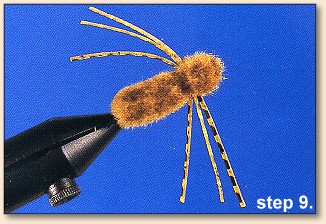
9. Gather the legs and cut them to body length.
Be careful not to stretch the legs while cutting.
Take a permanent marker of contrasting color and
give the fly a mottled striped look on both the
head and the body. ~ Phil

